Phishing scams have become increasingly prevalent in recent years, with scammers using emails, text messages, and other means to trick unsuspecting individuals into sharing their personal information. For instance, a common type of phishing scam involves sending a message claiming that an individual’s Amazon account has been locked due to multiple failed login attempts, and urging the recipient to click on a malicious link to recover their account.
In this article, we will explore the dangers of scams like this, how to identify them, and what steps you can take to protect yourself from falling victim to them.
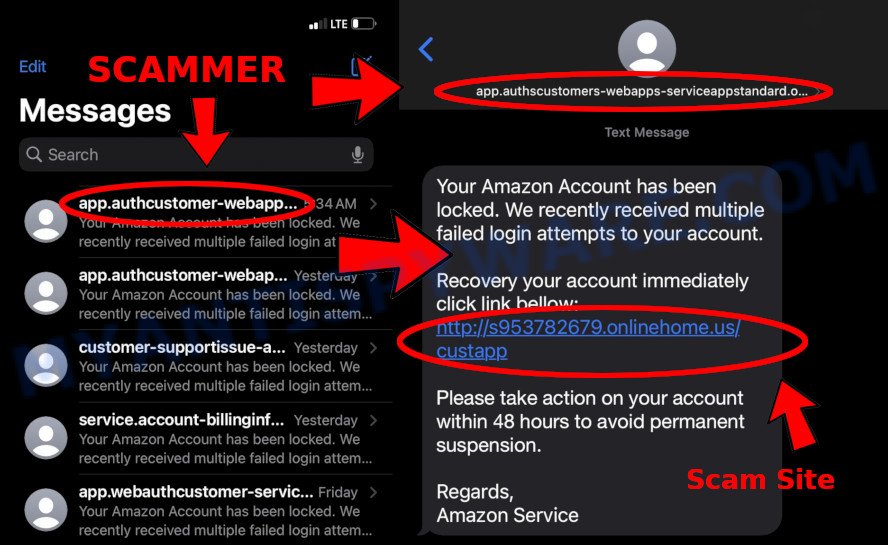
QUICK LINKS
- Amazon Account Locked Scam Explained
- How the scam works
- How to spot and avoid such scams?
- What to do when you receive the Amazon Account Locked Scam Text?
- Report a Scam
Amazon Account Locked Scam Explained
The “Amazon Account Locked” scam is a type of phishing scam that aims to trick individuals into giving away their personal information, such as login credentials, credit card numbers, or other sensitive data.
In this particular scam, the fraudsters send a message, typically via email or text, claiming to be from a legitimate company, in this case, Amazon. The message informs the recipient that their Amazon account has been locked due to multiple failed login attempts and urges them to click on a link to recover their account.
The link provided in the message leads to a fake website that looks like the real Amazon website, but is actually designed to steal the user’s personal information. Once the user enters their login credentials, the scammers can use them to access the user’s Amazon account, make fraudulent purchases, or steal their identity.
Initially, the scammers inserted a link to the hxxp://xn--80aaahorunoimsf3p.xn--p1ai/ site into the scam message. However, security researchers have recently discovered that the scammers are now using fraudulent sites on the Onlinehome.us domain to trick people into giving away their personal information. These sites may look like legitimate Amazon websites but are designed to steal personal information or install malware on the user’s device.
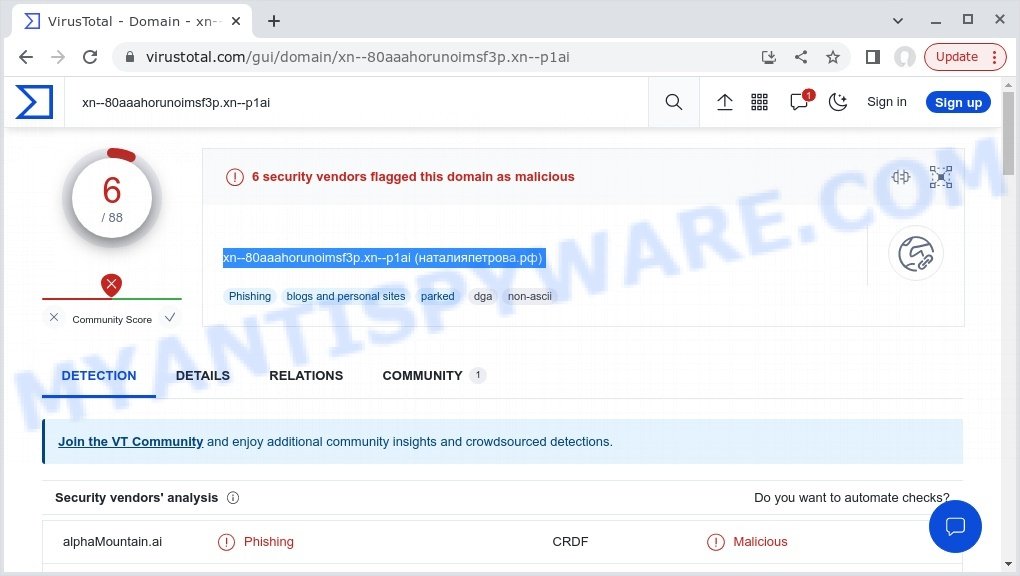
VirusTotal and other security software can help flag and identify these fraudulent websites before you click on them. However, it’s always important to stay vigilant and double-check the website URL before entering any personal information, even if the site appears to be legitimate. Legitimate companies, such as Amazon, will never ask you to provide sensitive information through an unsolicited message or email. Therefore, if you receive a message like this, you should never click on the link or provide any personal information. Instead, you should log in to your Amazon account directly through the official website or mobile app to check if there are any issues with your account.
A typical Amazon Account Locked Scam text reads as follows:
Your Amazon Account has been locked. We recently received multiple failed login attempts to your account.
Recovery your account immediately click link bellow:
http://xn--80aaahorunoimsf3p.xn--p1ai/authcus/
Please take action on your account within 48 hours to avoid permanent suspension.
Regards,
Amazon Service
How the scam works
Here is a step-by-step explanation of how the scam works:
- The fraudster sends a message, typically via email or text, claiming to be from a legitimate company, in this case, Amazon. The message informs the recipient that their Amazon account has been locked due to multiple failed login attempts.
- The message urges the recipient to click on a link to recover their account. The link provided in the message may appear to be an Amazon website, but it is actually a fake website designed to steal personal information.
- Once the recipient clicks on the link, they are taken to the fake website, which may look identical to the real Amazon website. The website prompts the recipient to enter their Amazon login credentials, such as their username and password.
- When the recipient enters their login credentials, the scammers capture the information and use it to access the recipient’s Amazon account.
- Once the scammers have access to the Amazon account, they can make fraudulent purchases, steal personal information, or commit other types of fraud.
- In some cases, the scammers may also install malware on the recipient’s device or use the personal information obtained through the fake website for other illegal activities, such as selling it on the dark web.
Examples of such scams
The Amazon Account has been locked Scam email is an example of a phishing scam that tries to trick people into giving away their personal information or money. Here are some other examples of scams that work in a similar way: Approve/Decline Wells Fargo Scam Text, Amazon Account On Hold Due to a Billing Issue Scam, Your Apple ID has been locked Scam Text, Look Who Died in an Accident Scam.
- Amazon Account On Hold Due to Billing Issue Scam Email
- PayPal McAfee Scam Email
- Notification I sent you an email from your email account Scam Email
- JOIVI Patio Furniture scam text message
- Microtik LLC PayPal Scam Invoice Email
These are just a few examples, but unfortunately, there are many other types of scams out there. It’s important to be vigilant and cautious when receiving any unsolicited emails or offers asking for personal information or payment.
How to spot and avoid phishing scams like the Amazon Account Locked Scam

Knowing how to spot and avoid scams like the Amazon Account Locked Scam is an important skill that can help you protect yourself from identity theft, fraud, and other forms of cybercrime. Here are some tips for spotting and avoiding these types of scams:
- Scammers often use email addresses or phone numbers that look similar to those of legitimate companies, but with slight variations. Be sure to double-check the sender’s email address or phone number to ensure that it is legitimate.
- Scammers often create a sense of urgency to get you to act quickly without thinking. Be wary of messages that urge you to take immediate action, such as clicking on a link or providing personal information.
- Before entering any personal information on a website, check the website address to ensure that it is legitimate. Scammers often create fake websites that look similar to legitimate ones, but with slight variations.
- If you receive a message with a link, don’t click on it if you are unsure of its legitimacy. Instead, go directly to the company’s website by typing the URL into your web browser or using a bookmark.
- Two-factor authentication adds an extra layer of security to your account by requiring a second form of verification, such as a code sent to your phone or email. Use this feature to protect your accounts from unauthorized access.
- Scammers often exploit vulnerabilities in software to gain access to your device or personal information. Make sure to keep your operating system, web browser, and other software up to date with the latest security patches.
- Phishing scams can be very convincing, but with a little education, you can learn to spot them. Take the time to read about different types of scams and stay up to date on the latest threats.
- The link provided in the message may look like an official Amazon link, but scammers often use look-alike domains that are very similar to the real thing. Always hover your mouse over the link (without clicking on it) to see the full URL, and make sure it is an official Amazon domain.
- Amazon will never ask you to provide your Amazon login, password, or credit card information via text message or email. If you are prompted to enter this information on a website, be very cautious, and look for signs that the website is legitimate, such as a padlock icon in the address bar.
- If you receive a phishing message, report it to Amazon, and delete the message immediately. You can forward the message to Amazon’s phishing email address, which is stop-spoofing@amazon.com, and then delete the message from your phone.
By following these specific tips, you can help spot and avoid the Amazon Account Locked Scam and protect your personal information from cybercriminals. Remember, it’s always better to err on the side of caution, and to take a few extra minutes to verify the legitimacy of a message before taking any action.
Threat Summary
| Name | Amazon Account Locked Scam |
| Type | Phishing Scam |
| Scammers websites | s953782679.onlinehome.us, xn--80aaahorunoimsf3p.xn--p1ai, “наталияпетрова.рф” |
| Fake claims | Amazon Account Locked Due to Failed Login Attempts |
| Disguise | The message appears to be from Amazon, using the company’s branding to make it seem legitimate. However, it is actually a phishing scam designed to steal personal information. |
| Damage | Financial Loss, Identity Theft. |
| Distribution methods | Email, Text Messages |
What to do when you receive the Amazon Account Locked Scam Email
If you receive the Amazon Account Locked Scam Text or Email, here are the steps you can take:
- The first and most important thing you should do is avoid clicking on any links in the message. These links may lead you to a fake website designed to steal your personal information or install malware on your device.
- Report the message. You can report the message to your phone carrier, as well as to Amazon. This can help prevent the scammers from targeting other people in the future.
- Report the scam to the Federal Trade Commission (FTC) at https://www.ftc.gov/ or the Anti-Phishing Working Group (APWG) to help prevent others from falling victim to the same scam.
- Once you’ve reported the message, you should delete it from your device to avoid any accidental clicks or further interaction.
- Consider setting up two-factor authentication on your Amazon account to add an extra layer of security.
- If you did click on a link or enter your personal information into a phishing site, take immediate steps to protect your identity. This may include changing your passwords, monitoring your credit reports, and notifying your financial institutions.
- It’s a good idea to monitor your Amazon account and any associated financial accounts for any suspicious activity. If you notice any unauthorized transactions or changes to your account, contact Amazon immediately to report the issue and get assistance. Use the steps (https://consumer.ftc.gov/articles/what-do-if-you-were-scammed) to try to stop a transaction, get a transaction reversed, or get a refund.
By taking these steps, you can help protect yourself from falling victim to the Amazon phishing scam and keep your personal information secure.
Report a Scam
If you have received the Amazon Account Locked Scam text or a message that is similar but not the same as the example above, then post it as comment on this article. Please include the email address the email came from. This helps us to warn users about current scams, monitor trends and disrupt scams where possible.
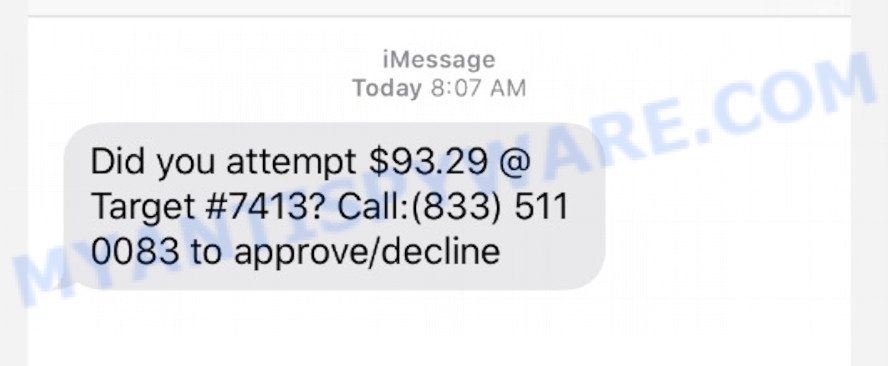
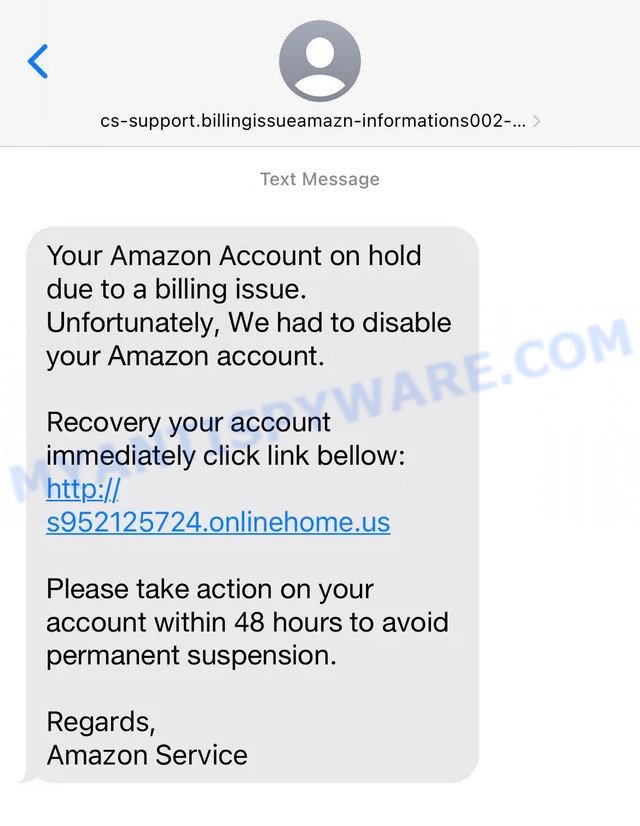
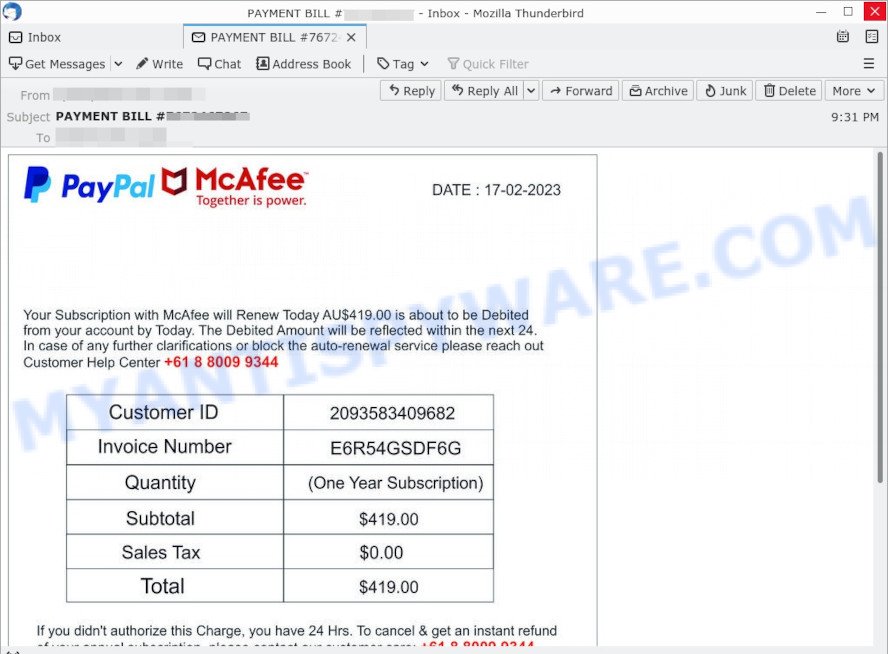
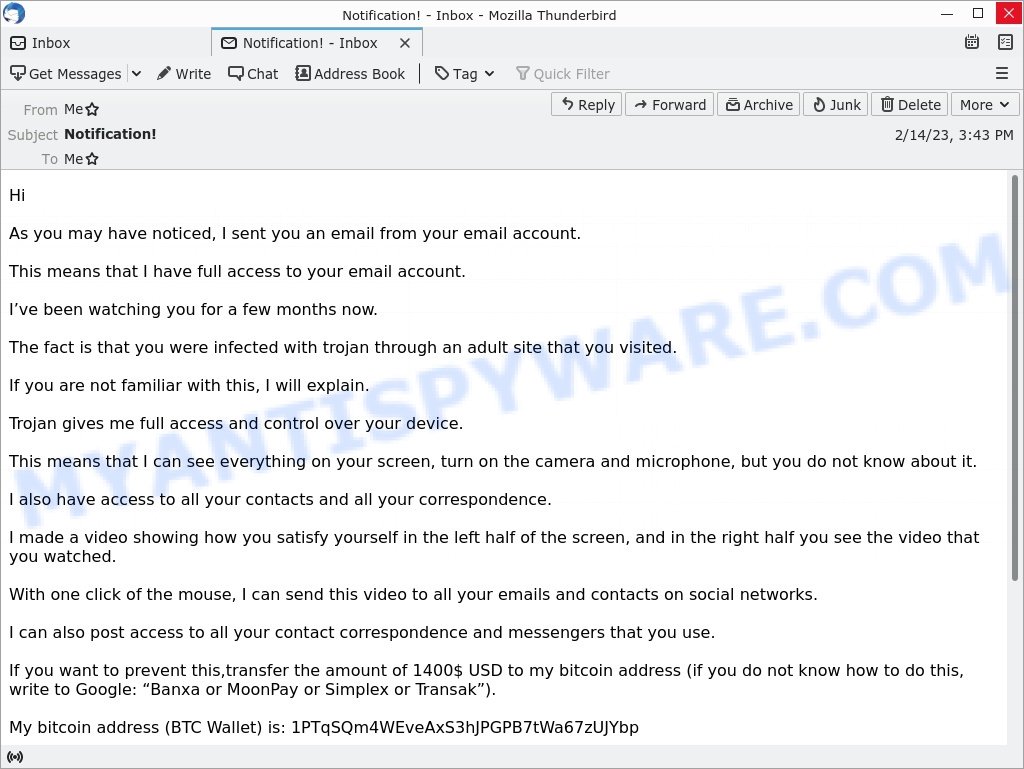
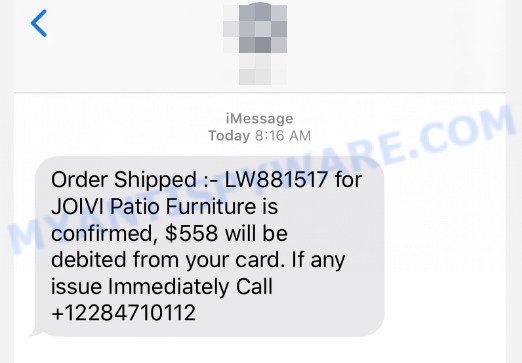
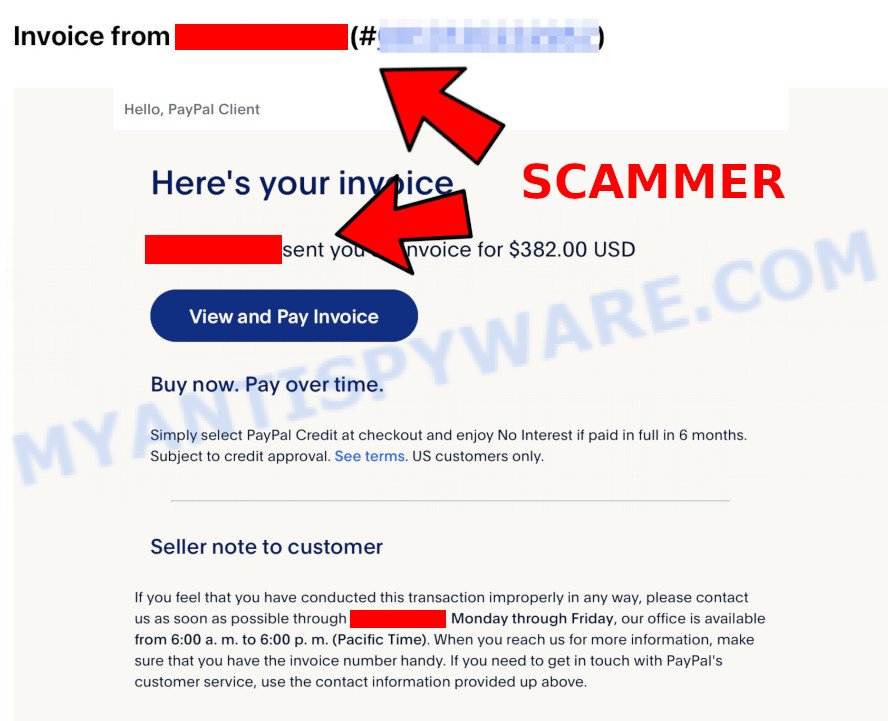
















I received a text that my account is locked and I gave out my SS number. My email is xxxxx at gmail.com
If you have given out your Social Security number (SSN), it’s important to act quickly to help protect yourself from identity theft. Here are some steps you should take:
Remember, it’s important to act quickly if you suspect that your SSN has been compromised. The sooner you take action, the better your chances of preventing identity theft and minimizing the damage done to your finances and credit.